本文由原筑景观授权mooool发表,欢迎转发,禁止以mooool编辑版本转载。
Thanks YZscape for authorizing the publication of the project on mooool. Text description provided by YZscape.
原筑景观:古洋河在河间以东,是历史上河间环城古水道的一部分,然而近代以来,水道荒废,周边工厂和居住区排污严重,让古水道成为排水沟。我们所设计建造的古洋河公园是环城水系整治的重要环节:疏通水道、整治水体并对水体及周边进行生态恢复。我们将水面扩大,并在河道周边加入可供人通行和停留的步行道和构筑,新的古洋河在排洪泄洪功能之外,更成为居民运动休憩、融入自然的去处。
YZscape:The Guyang River, situated in the eastern of He Jian City, is a part of the ancient waterway around the river in history. However, in modern times, the waterway has been abandoned, and the large waste from the surrounding factories and residential areas made the ancient waterway a drain. The Guyang River Park we designed and built is the important part of the renovation of the water system around the city: dredging waterways, rectifying water bodies and ecological restoration of water bodies and surrounding areas. We expand the water surface and add walkways and structures around the waterway for people to pass and rest. The new Guyang River have become a place for residents to relax and integrate into nature in addition to flood discharge function.

梁亭是便是我们在古洋河公园里设计的两组临水亭榭。亭在这里是我们介入自然的一种方式,它提供了新的观看角度和体验方式,正是在这一过程中我们创造了风景。
Beam Pavilion is the two sets of waterside pavilions that we designed in the Guyang River Park. Here, the pavilion is a way we intervene in nature, and offers a new perspective and experience of the scenery. It is in this process that we create the landscape.

森佩尔在著作中将建造技艺分为两种基本类型,the tectonics of the frame 和 the stereotornics of the earthwork。 前一种可以理解为木头之间的搭接形成的框架,后一种是砖石重复砌筑中形成体块和体量。这两组临水亭榭就是通过梁这个构件,将两种技艺上下叠合形成的。
Semper divides the construction skills into two basic types in his works: the tectonics of the frame and the stereotornics of the earthwork. The former can be explained as the frame formed by the joints between the woods, and the latter is the formation of the mass and volume in the repeated masonry. The two sets of waterside pavilions are formed by the overlap of two techniques up and down through the beam.
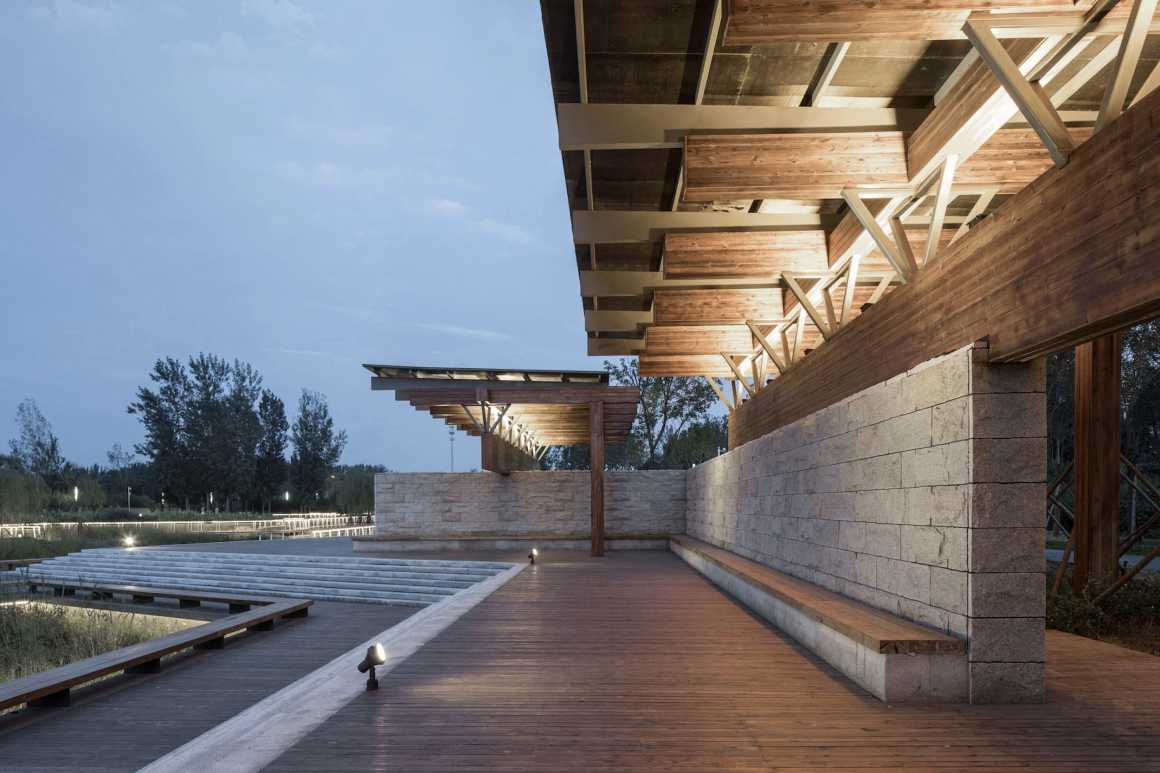
结构表达
建筑分为两层,下层砌块墙提供边界,促成空间开合,上层的构架支撑屋面,得以遮阳挡雨。我们意图让下层的砌体扮演双重角色,既围合空间、塑造场地,同时又通过梁的搭接承载上层屋架的重量。在传统中国建筑中,大梁是整座建筑中最重要的一根构件。大梁的尺寸决定了房屋的跨度,屋架的重量集中到这根构件上,梁的跨度及高度是建筑规模的表达。
Structural Expression
The building is composed of two layers. The lower block wall provides the boundary which produces the opening and closing of the space, and the upper frame supports the roof to protect the roof from the sun and the rain. We intend to let the lower masonry play a dual role, not enclosing the space and shaping the site, but also carrying the weight of the upper truss through the bonding of the beams. In traditional Chinese architecture, the girder is the most important component of the building. The size of the girder determines the span of the house, and the weight of the truss is concentrated on this component. The span and height of the beam is the expression of the scale of the building.
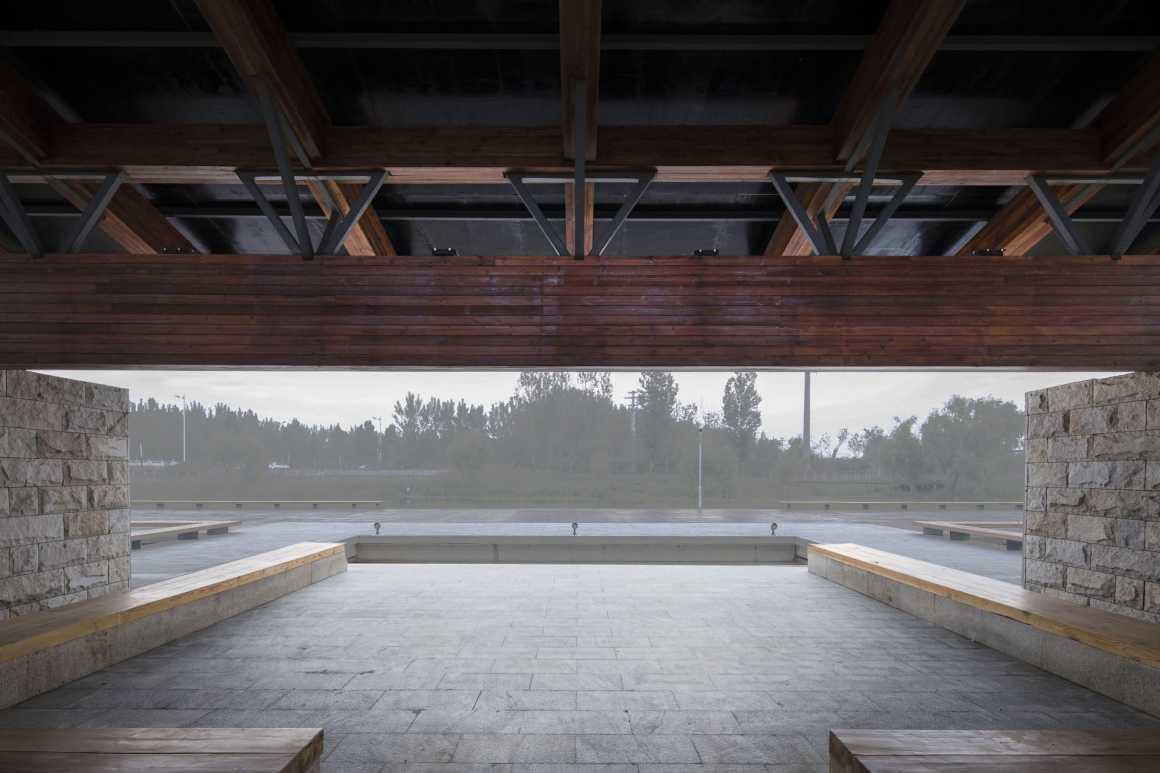
我们意图在设计中让梁成为屋架受力的核心表达。经过夸张后的大梁有1米高,跨越整个12米的面宽,但离地面只有不到2.3米高,几乎触手可及。挑高与跨度之间的悬殊比例让梁的看上去似乎跨得更远。梁在外侧的出挑将近4米,巨大的出挑一方面强化了梁的受力视觉表达,另一方面模糊了建筑的内外关系,让墙的内外两面都给人提供庇护。
We aim at making the beam a core expression of the force on the roof truss in the design. The exaggerated girder is 1 meter high and spans the entire width of 12 meters, but is less than 2.3 meters above the ground. It is almost within reach. The beam’s span seems farther due to the disparity between the height and the span. The beam is nearly 4 meters on the outside. On one hand, the large-scale exposed part enhances the visual expression of the beam , and on the other hand it blurs the internal and external relation of the building, and both sides of the wall provide shelter for people.
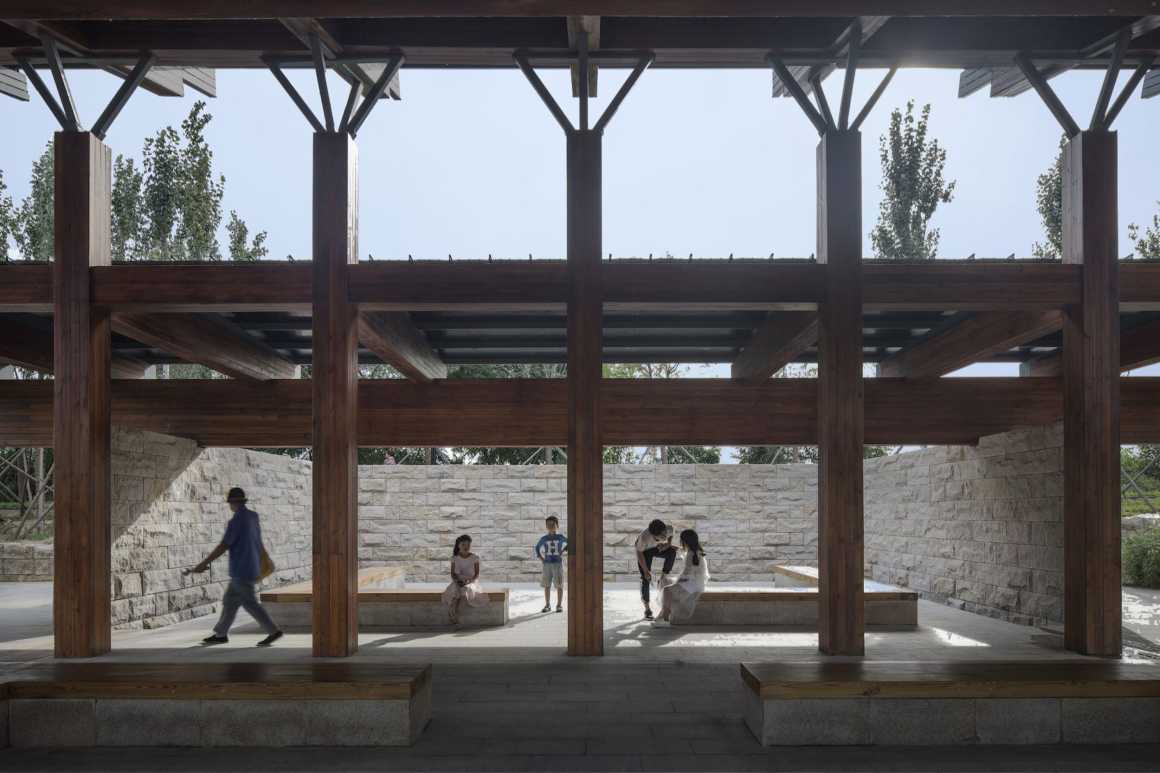
构造
设计方案的灵感来自于斗拱对于力的传递。梁顶上和柱头上的倒金字塔结构由方钢管焊接而成,四面通透,将屋顶的重量向下传递。厚重的屋顶结构支撑在这一根根细小的钢管上,并沿着钢管的方向将重量汇聚至梁上的一点。它们让屋面与支撑结构脱开,让框架的搭接更加清晰。
Structure
The design proposal is inspired by the transmission of the force of the bucket arch. The inverted pyramid structures on the top of the beam and the stigma, welded by square steel pipes and be transparent from all sides, transfer the weight of the roof downwards. The thick and heavy roof structure is supported by the small steel pipes, and gathers the weight along the direction of the steel pipes to a point of the beam. They disengage the roof from the support structure, forming clearer joints of the frames.

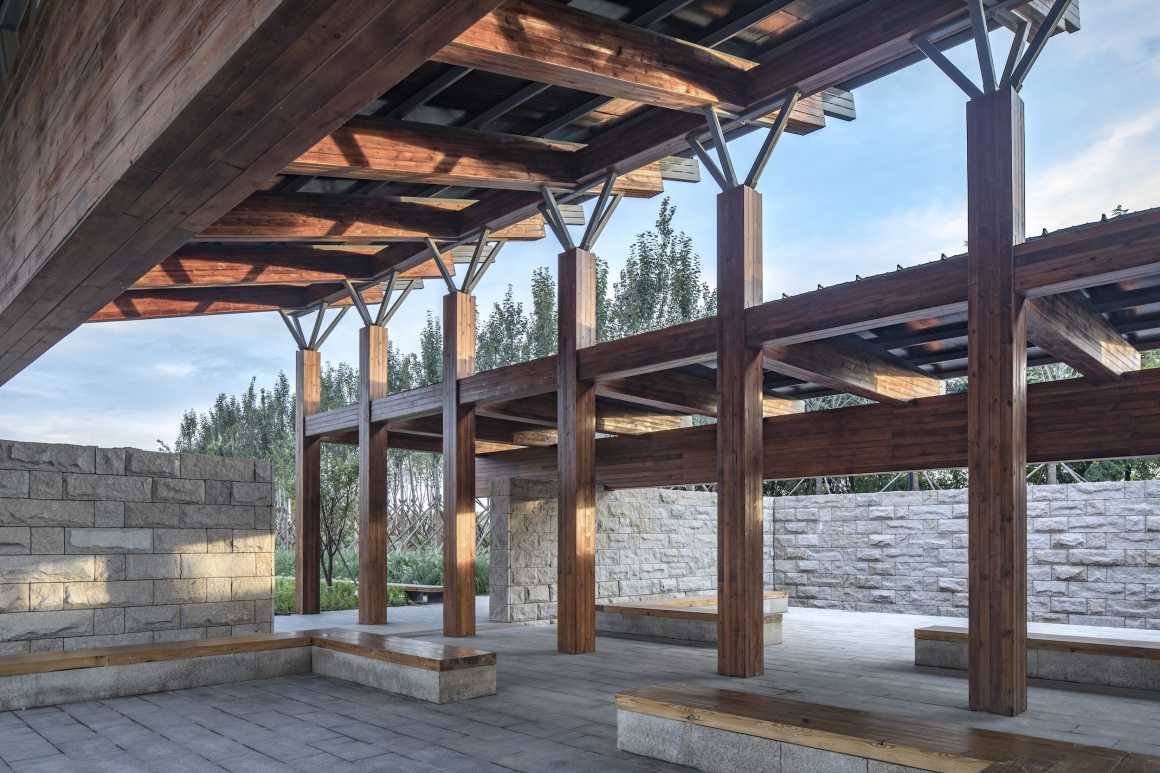
压得很低的梁不仅给身体带来一种紧迫感,同时也先于屋面限定了“内”与“外”。微微高过头顶的大梁贯穿建筑始终。站在梁后,眼前是梁与地面限定而成的画框,向前漫步会完成在梁下的穿越。这是梁亭中最为独特的仪式,是建筑构件与身体之间的美妙互动。
The low beam not only gives the body a sense of urgency, but also defines “inside” and “outside” before the roof. The girder slightly above the head is always through the building. Standing behind the beam, we can see the picture frame defined by the beam and the ground. Walking forward will complete the crossing under the beam. This is the most unique ceremony in the beam pavilion, a wonderful interaction between the building components and the body.
▼南段梁亭 South Beam Pavilion
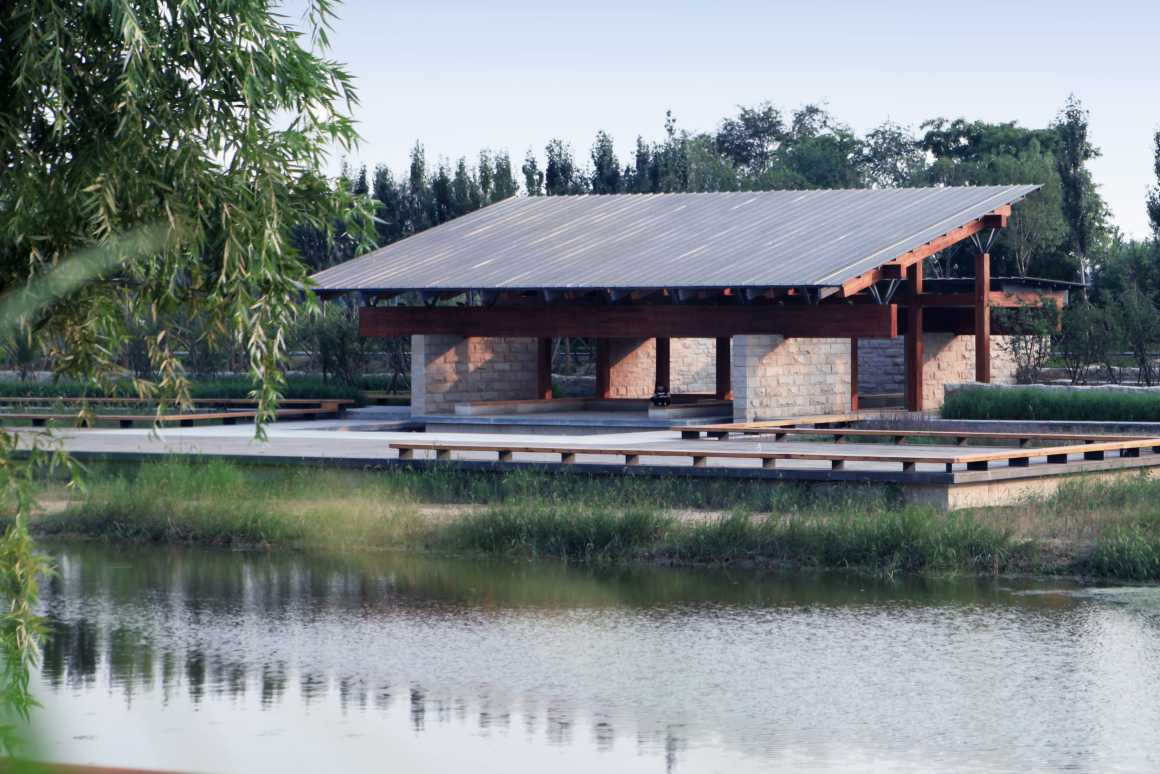
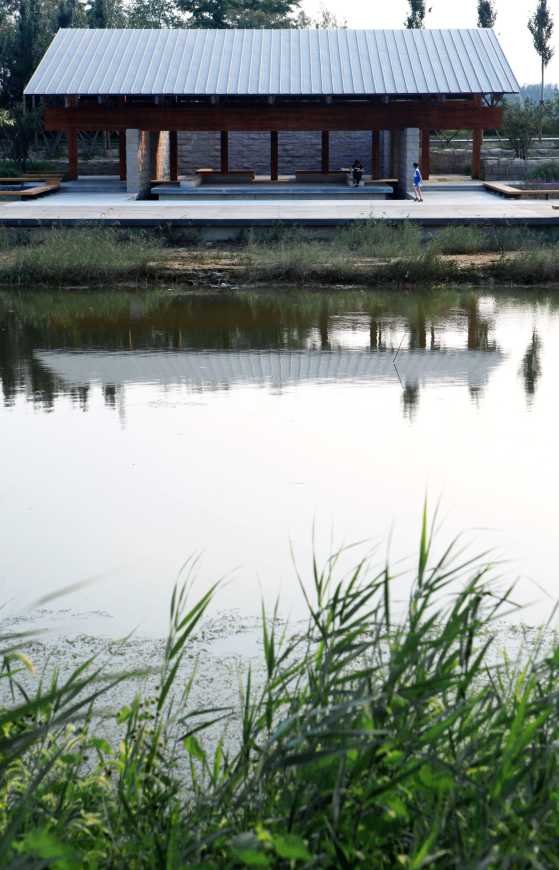
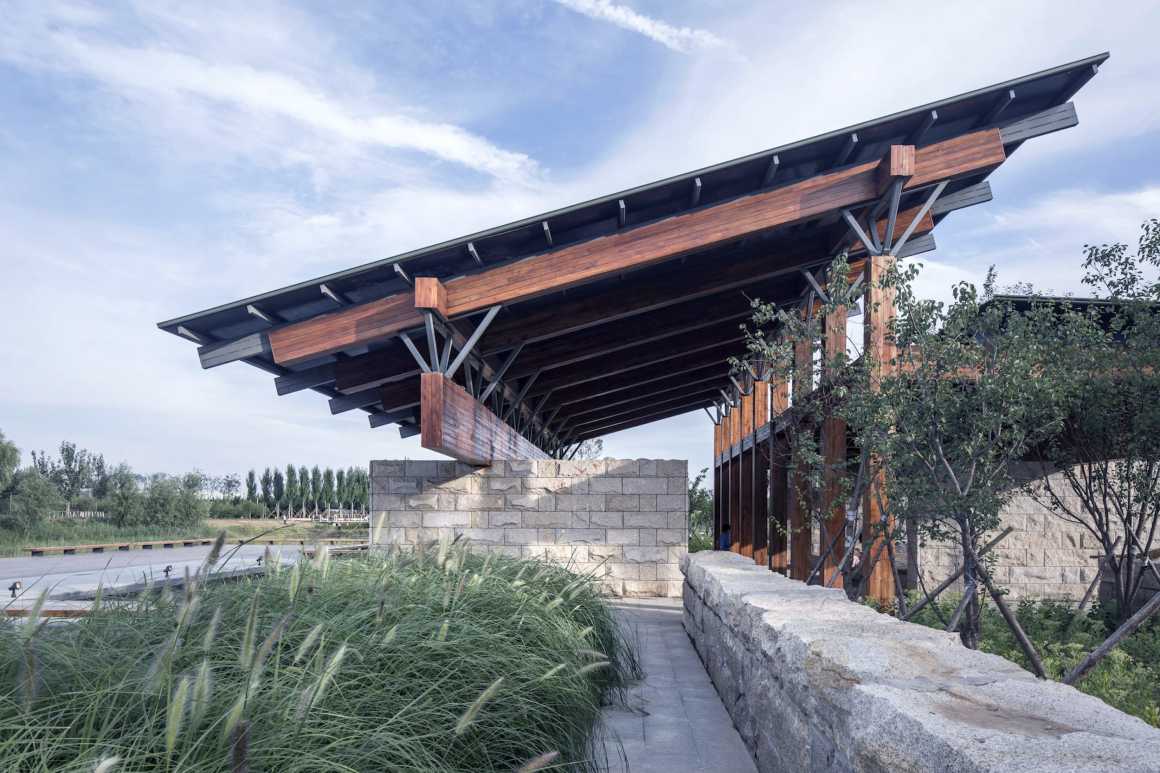
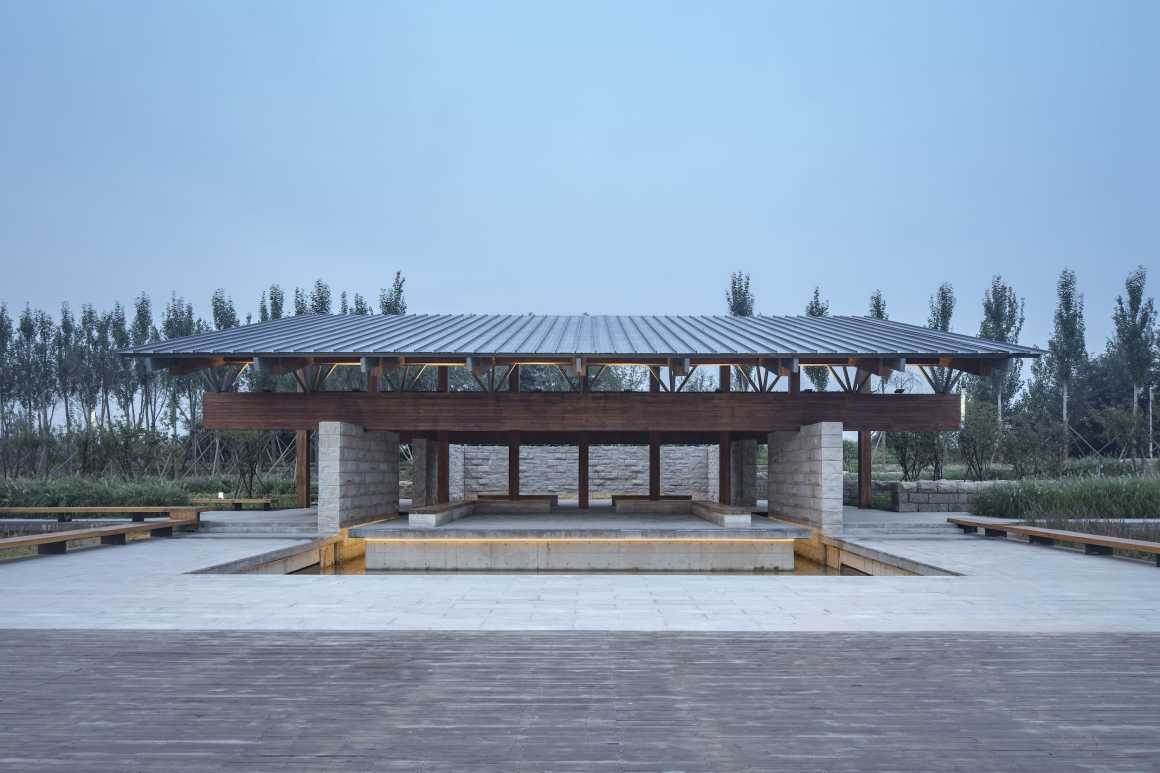
▼北段梁亭 North Beam Pavilion
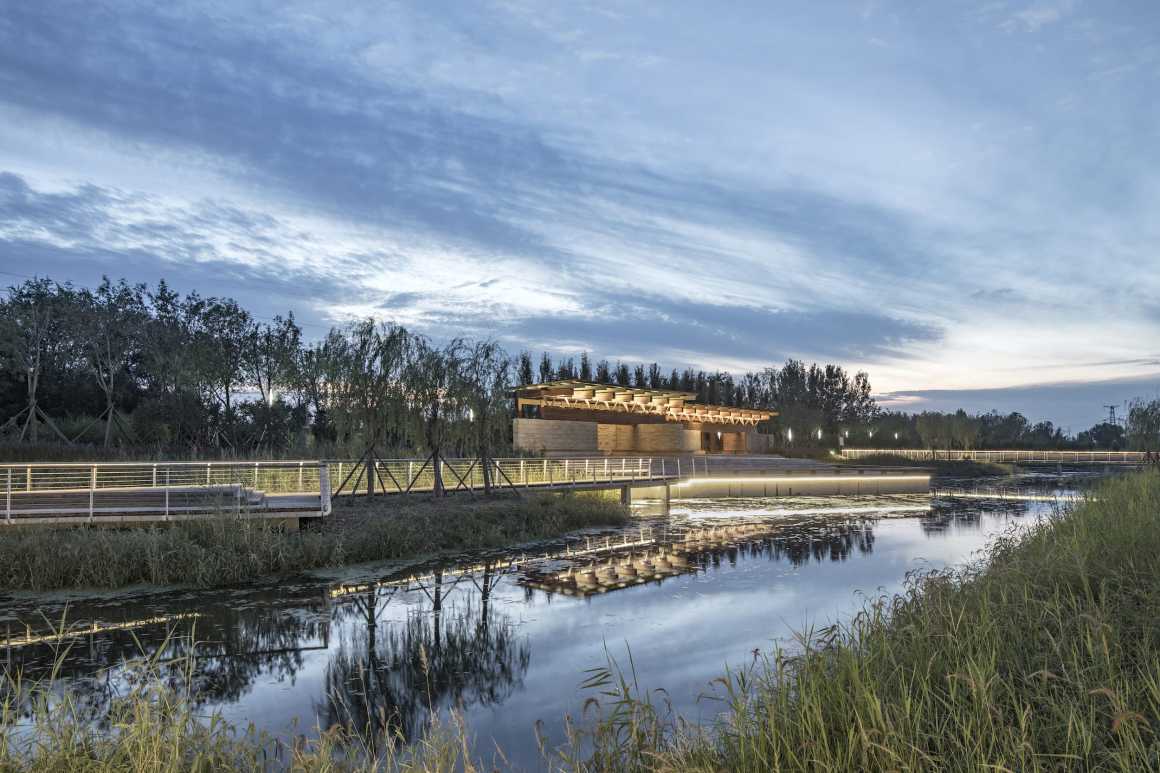


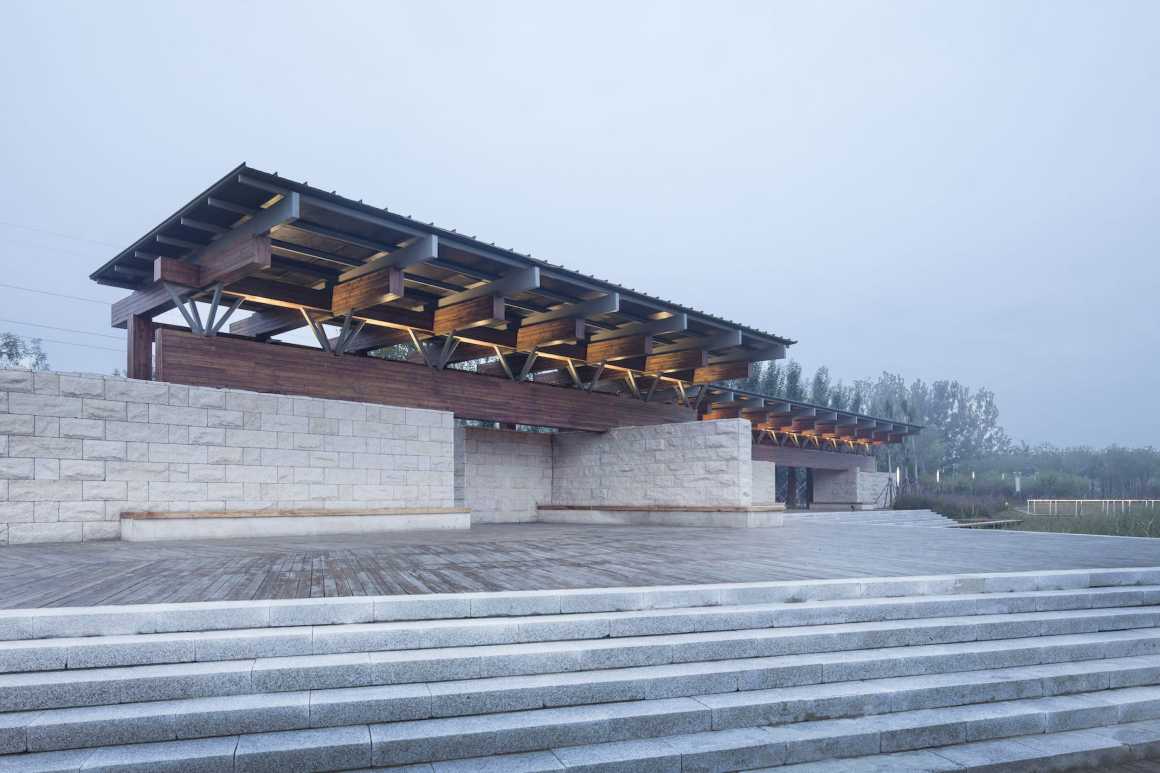
▼冬季的梁亭(南段)South Beam Pavilion in winter
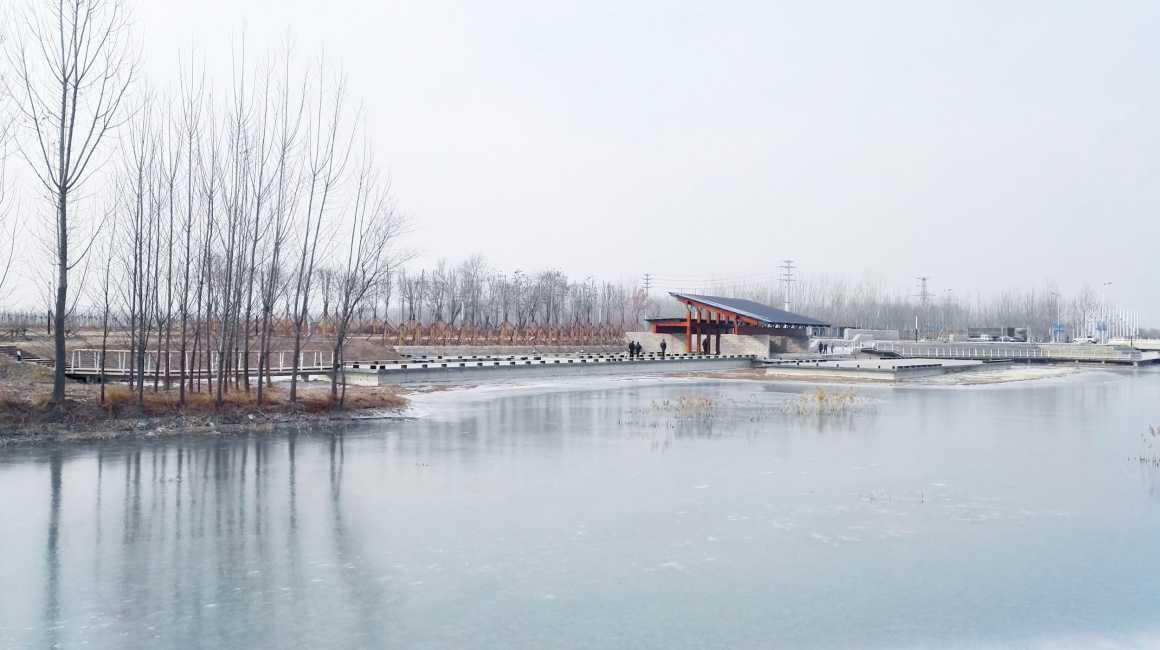
▼冬季的梁亭(北段)North Beam Pavilion in winter

▼梁亭南段平面图 South Plan
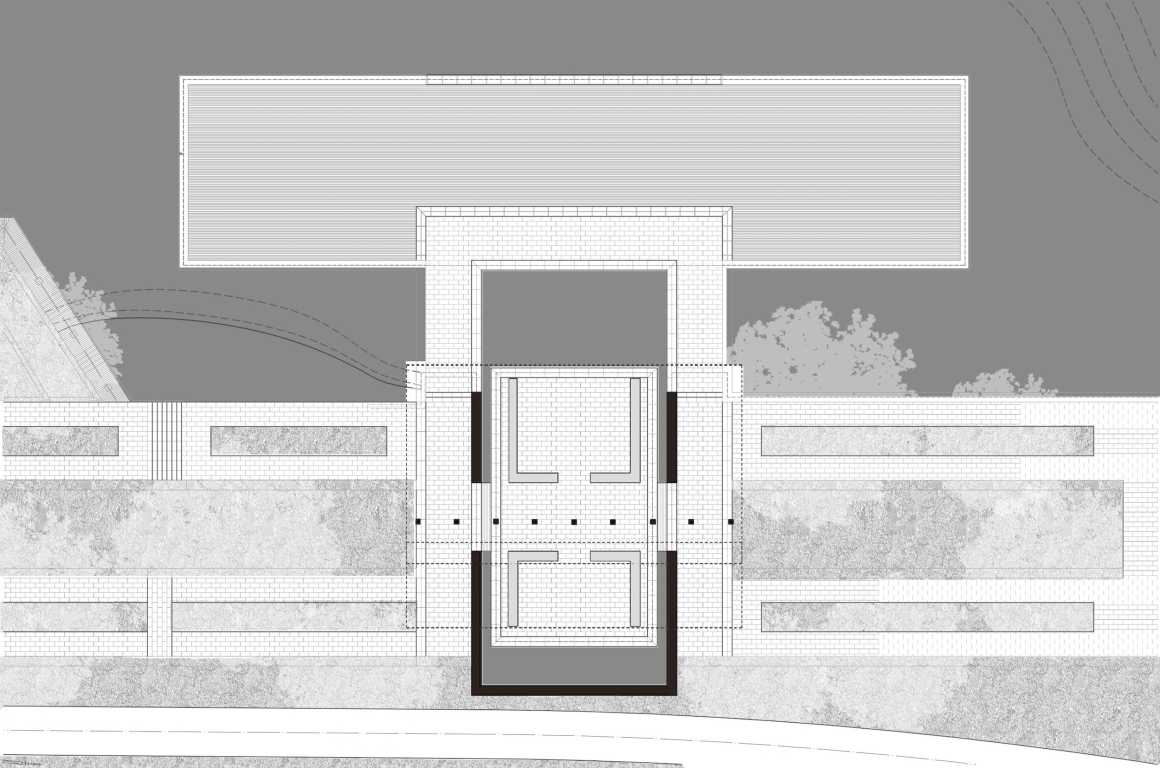
▼梁亭南段剖透视 South Axonometric
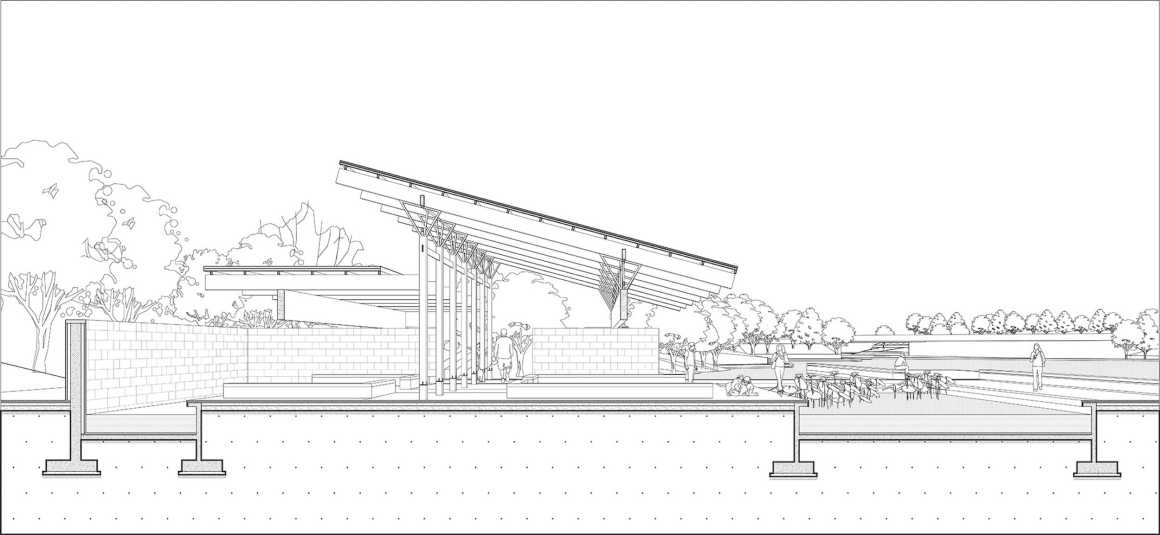
▼梁亭北段平面图 North Plan
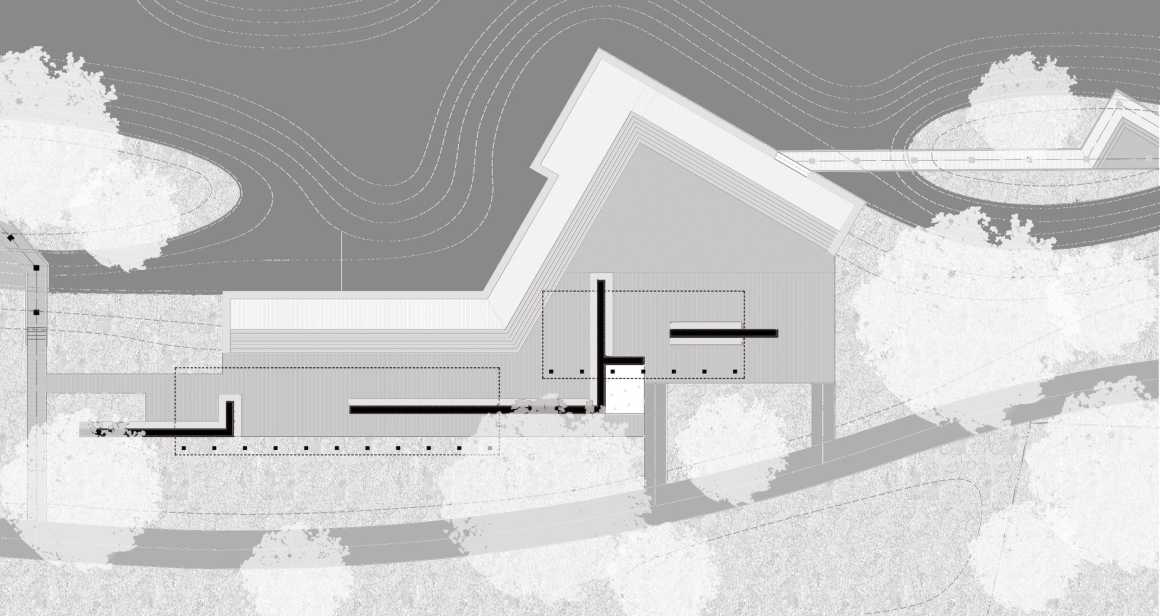
▼梁亭北段剖透视 North Axonometric

项目名称:梁亭
地点:河北省河间市
业主:河间市住房和城乡规划建设局
设计时间:2017年4月–2017年7月
完成时间:2018年8月
设计:原筑景观
主创及设计团队:闫明、王欢
结构设计:高雪梅
摄影:田方方、宋本明
图片版权:原筑景观
Project name: Beam Pavilion
Location: Hejian city, Hebei province, China
Client: Hejian Housing and Urban and Rural Planning and Construction Bureau
Design period: April 2017 — July 2017
Completion: August 2018
Design: YZscape
Leader designer & Team: Yan Ming, Wang Huan
Structure: Gao Xuemei
Photography: Tian fangfang, Song Benming
Photo credits: YZscape
更多 Read more about: 原筑景观




0 Comments